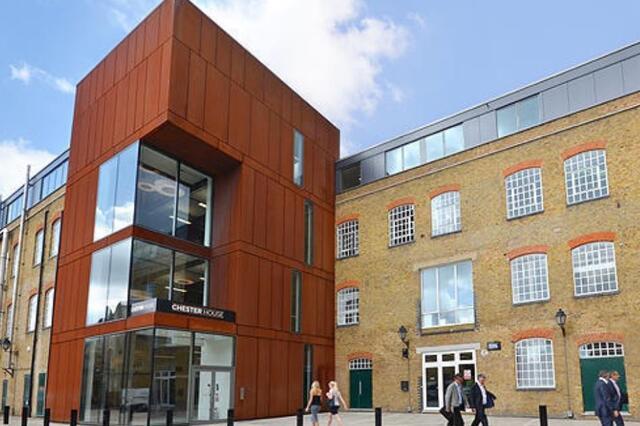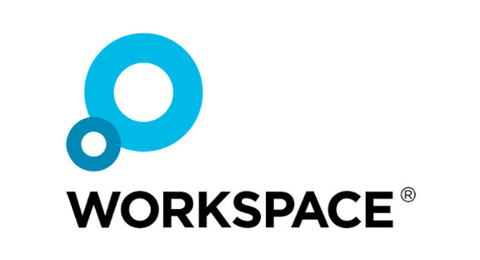Chester House Whole Lifecycle Carbon Analysis
23 June 2017Chester House Whole Lifecycle Carbon Analysis
23 June 2017In 2011, Workspace Group refurbished Chester House, cutting the whole lifecycle carbon emissions of the building by almost 25%, compared to a new regional office building. This will save more than 9,000 tonnes of CO2 over the building’s 60-year lifespan.
Key Facts
- 9000 TONNES OF CO2 SAVED OVER BUILDING LIFESPAN
- 63% LESS CO2 PRODUCED AT MANUFACTURE STAGE
- 12% LOWER OPERATIONAL CO2 EMISSIONS
- OVERALL 25% LOWER CO2 EMISSIONS THAN REGIONAL BENCHMARK
Situation
Workspace Group is a specialised property business, which provides office, studio and light industrial workspace for small and medium-sized enterprises.
Chester House in Kennington, South London, is a Victorian warehouse converted into offices. Workspace completed a £3.7 million refurbishment project, retaining many original features, at the same time as introducing an internal light well and a new glazed, Cor-Ten steel clad entrance atrium. The building provides a broad range of studio-style units over four floors. Workspace relocated its head office there in July 2011.
Workspace commissioned a whole lifecycle carbon assessment at Chester House. This was part of the company’s efforts to assess whether its business model is inherently more carbon efficient than that of other prime office developers, by virtue of recycling older buildings, rather than demolishing them and building new ones. Whole lifecycle carbon reporting takes account of all emissions associated with a building’s lifespan, from construction to deconstruction, rather than just looking at those that arise from energy use during operation.
Actions
The assessment at Chester House was delivered by JLL in partnership with Sturgis Carbon Profiling. The team compared Chester House to new build, air conditioned office buildings in London and in regional business districts.
They evaluated the four main categories from the European CEN/TC350 calculation methodology, product manufacture, construction, operation and end of life, as well as looking at commuting, which is a significant contributor to carbon emissions for office buildings.
During the product manufacture stage, Chester House produces 69% and 63% less carbon than the central London and regional benchmark buildings respectively. This is mainly because refurbishment requires much less material, as it keeps the major building structure. During construction, the emissions at Chester House are higher than the benchmark buildings.
This is because refurbishment might take longer on site, as the building’s condition is less predictable. Conserving original features also results in more emissions as it takes longer and requires a wider range of trades – though it has significant heritage benefits.
During operation, emissions are 38% and 12% lower than central London and regional benchmark, largely because Chester House does not have high maintenance equipment, such as large lifts and escalators.
A key saving compared to the regional benchmark building was due to commuting, as Chester House is a two-minute walk to Oval station, served by numerous bus routes, and offers cycle racks and showers.
At the end of life stage in 60 years, it is assumed that Chester House will be refurbished again and therefore there are no emissions associated with deconstruction or disposal. The original brick façade gives the building a long life expectancy.
Financials
- Quantifying the additional investment in energy efficiency initiatives is complex. For instance, repairing existing windows and installing solar treated secondary glazing cost £382 per m2. This was almost £300 per m2 more than just repairing them, but almost £300 per m2 less than replacing them with new double glazed windows
- Workspace is monitoring energy use to assess the financial savings achieved Whole lifecycle carbon analysis through energy efficiency measures
Benefits
Over a 60-year lifespan, taking account of grid decarbonisation, Chester House has:
- 35% lower emissions than the new build central London benchmark building, saving over 15,000 tonnes of CO2
- 25% lower emissions than the new build regional benchmark building, saving more than 9,000 tonnes of CO2. Excluding commuting, the reduction is 22%.
Challenges and Achievements
BALANCE
How to adapt an old building, retaining heritage features, at the same time as meeting the needs of modern businesses, for instance around appearance and energy efficiency?
At Chester House, although there were few planning drivers to retain historic features, Workspace retained the original windows, even reinstating some which had previously been modernised. Instead, they fitted internal secondary glazing to reduce heat loss and air leakage, and installed blinds to reduce solar gain. Internally, the company also retained the exposed brickwork, whilst lining external walls with fully insulated plasterboard. As well as reducing heat loss, this speeded up the refurbishment and cut labour costs, compared to traditional plastering. In addition, existing ceiling soffits were repaired with minimal use of new suspended ceilings, saving on materials use.
ACCURACY
How to accurately estimate or forecast emissions for each stage?
As part of the refurbishment, Workspace introduced a number of measures to make the building more energy efficient during operation. These included installing a new heating and cooling system, which incorporates air source heat pumps to absorb heat from outside air and release it inside for heating during the winter, and vice versa during the summer. The company believes that these initiatives will further reduce the carbon emissions of the building during operation, and will review this on an ongoing basis. Workspace also sourced a number of materials which can be recycled at their end of life, such as floor vinyls. This is not accounted for during the end of life phase.
Find out more
Karen Jamison
Energy & Sustainability Manager
Workspace
E: Karen.Jamison@workspace.co.uk
T: 020 7369 2258
*Please note that the information on this page was supplied by the BBP Member and the BBP assumes no responsibility or liability for any errors or omissions in the content

